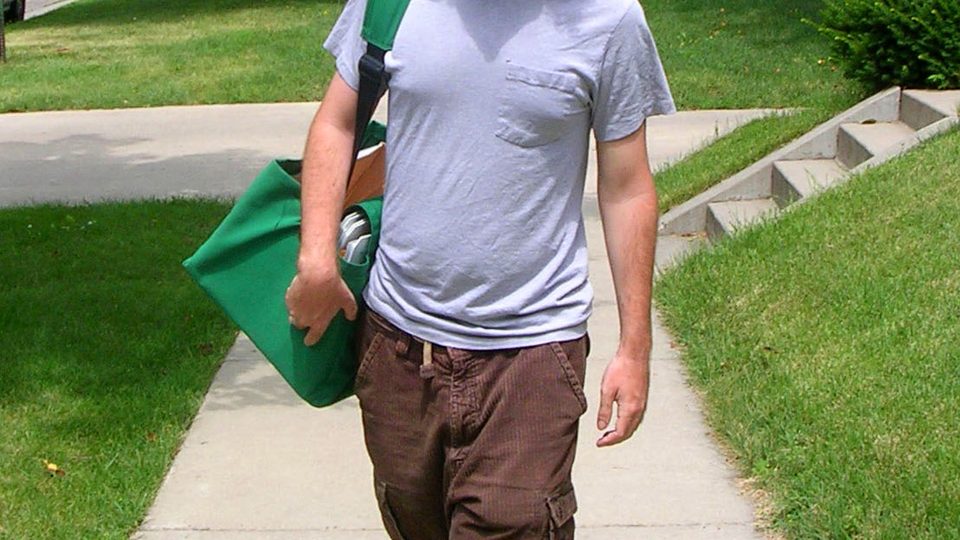The Pace Slows, But the Mail Still Goes Through
Student workers at Carleton’s post office deliver mail through the lazy days of summer.

At precisely 1 p.m., Mathias Bell ’07 grabs a messenger bag and begins his route. The bag is square and large – one might expect it to hold pizza – but instead it contains a small assortment of the college’s mail. Within this bag, small envelopes mix with large parcels, and resumes of job applicants mingle with the President’s personal correspondence.
Bell, a student worker at Carleton’s post office, begins his route in the post office, located in Sayles-Hill Campus Center. Here, a group of student workers sort mail for faculty, staff, and the few students remaining on campus. Different days bring different types of mail. Because the post office is closed on Saturdays during the summer, Monday is always the busiest day. The mailroom is routinely flooded with copies of the major newsmagazines; on Tuesdays, the staff takes pleasure in reading the copies of US Weekly. Since periodicals are not forwarded, they tend to accumulate, filling up mail crate after mail crate.
Reviewed as a whole, the magazines paint an interesting and not altogether inaccurate picture of Carleton students. Stacks of Newsweek, Time, and U.S. News meet Rolling Stone, Blender; and Vibe; Science, New Scientist, and Mathematics sit next to piles of The Nation, the New Republic, and The New Yorker. Students and staff members on campus for the summer may browse through the magazines, collecting heaps of the unclaimed periodicals. It’s a veritable goldmine.
Once the mail is sorted, Bell and other staff members make the rounds. Mail is distributed to every campus building, each of which is included in a specific route. Bell’s route begins at Willis, Carleton’s oldest building, and extends to Nutting House, the President’s residence.
At times, many of the buildings on his route feel like ghost towns. On the top floor of Willis, the political science department is eerily quiet, with only the refrigerator’s whine carrying through the vacant halls. “It’s usually like this during the summer,” Bell says, walking past a line of empty rooms. Other stops hum with activity. Strong House, which holds the department of human resources, is filled with staff members; the Alumni Annual Fund office, with just a few days left of the fiscal year, is on overdrive. Bell grabs some candy from an open jar in the office, and moves on. “They always have free candy,” he says, revealing a plunder of chocolate bars and Nerds.
Bell says he has “a very nice summer job” – and he does – but he also has an opportunity to feel the pulse of Carleton, even as the school lazily winds through the long, hot days of summer. Few people are outside – places that normally teem with students sit empty and serene. The cacophony of college doesn’t really exist. Still, staff and faculty walking from building to building stop and talk to one another, while neighborhood children pedal their bikes down the empty sidewalks. The mail route crosses all of these paths.
Thirty-five minutes after he started, Bell has made a loop, and finds himself back in the post office. He puts away his messenger bag, sits down in a comfortable chair, and cracks open a magazine. Paper pushing never felt so good.